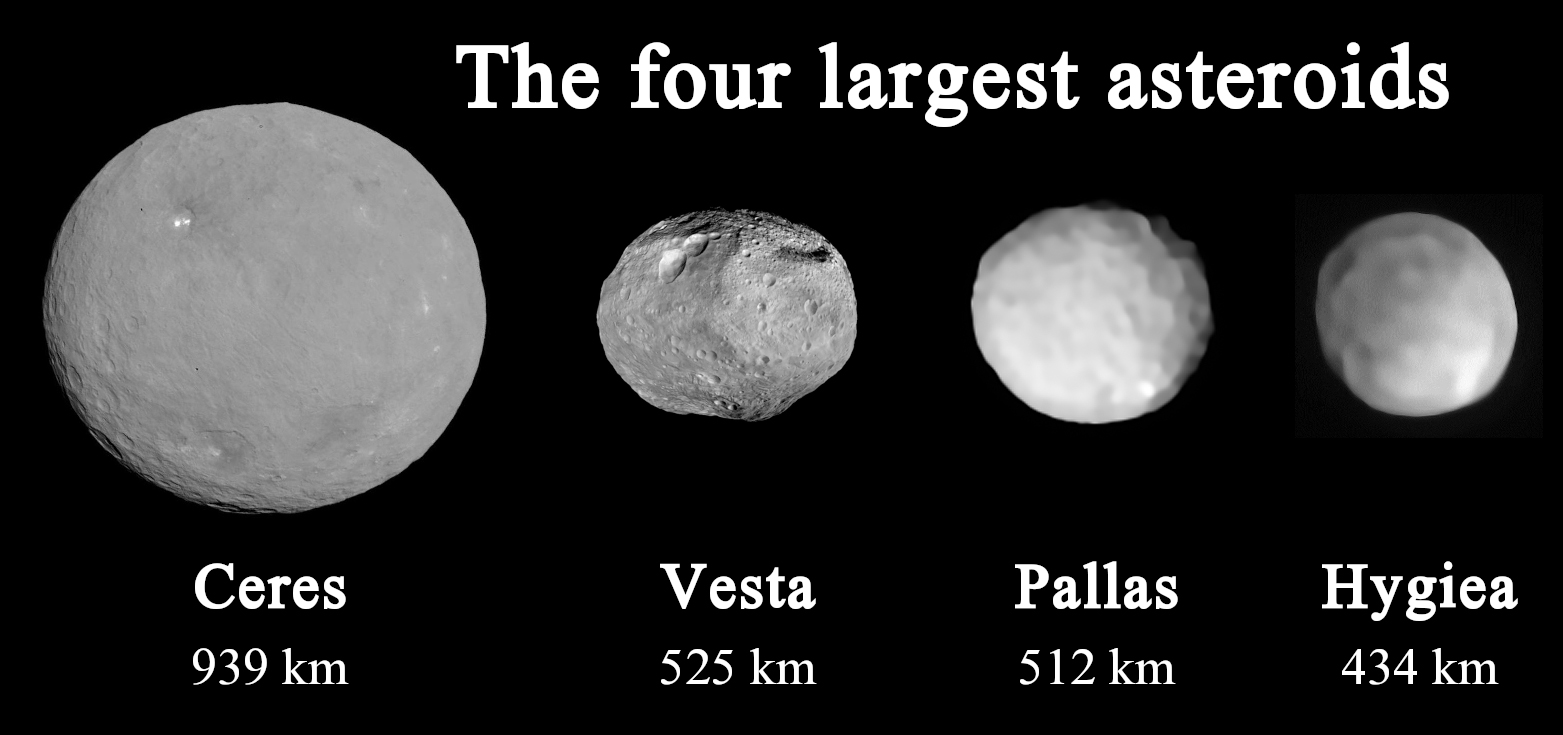Pallas (Asteroid)
Enlarge text Shrink text- Work cat.: Asimov, I. The asteroids, 1988.
Pallas (minor-planet designation: 2 Pallas) is the third-largest asteroid in the Solar System by volume and mass. It is the second asteroid to have been discovered, after Ceres, and is likely a remnant protoplanet. Like Ceres, it is believed to have a mineral composition similar to carbonaceous chondrite meteorites, though significantly less hydrated than Ceres. It is 79% the mass of Vesta and 22% the mass of Ceres, constituting an estimated 7% of the mass of the asteroid belt. Its estimated volume is equivalent to a sphere 507 to 515 kilometers (315 to 320 mi) in diameter, 90–95% the volume of Vesta. During the planetary formation era of the Solar System, objects grew in size through an accretion process to approximately the size of Pallas. Most of these protoplanets were incorporated into the growth of larger bodies, which became the planets, whereas others were ejected by the planets or destroyed in collisions with each other. Pallas, Vesta and Ceres appear to be the only intact bodies from this early stage of planetary formation to survive within the orbit of Neptune. When Pallas was discovered by the German astronomer Heinrich Wilhelm Matthias Olbers on 28 March 1802, it was considered to be a planet, as were other asteroids in the early 19th century. The discovery of many more asteroids after 1845 eventually led to the separate listing of "minor" planets from "major" planets, and the realization in the 1950s that such small bodies did not form in the same way as (other) planets led to the gradual abandonment of the term "minor planet" in favor of "asteroid" (or, for larger bodies such as Pallas, "planetoid"). With an orbital inclination of 34.8°, Pallas's orbit is unusually highly inclined to the plane of the asteroid belt, making Pallas relatively inaccessible to spacecraft, and its orbital eccentricity is nearly as large as that of Pluto. The high inclination of the orbit of Pallas results in the possibility of close conjunctions to stars that other solar objects always pass at great angular distance. This resulted in Pallas passing Sirius on 9 October 2022, only 8.5 arcminutes southwards, while no planet can get closer than 30 degrees to Sirius.
Read more on Wikipedia >
 Place
Place







